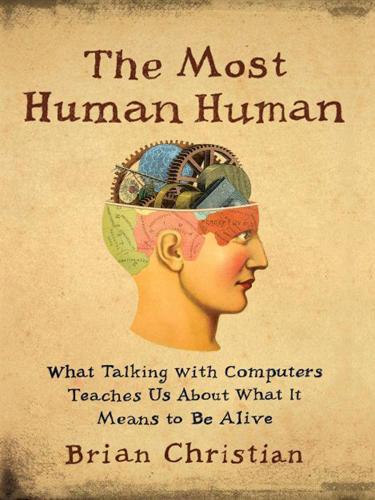
The Most Human Human: What Talking With Computers Teaches Us About What It Means to Be Alive
by
Brian Christian
Published 1 Mar 2011
Griping about the weather with the barista, instead of simply stating your order and waiting patiently, reinforces the fact that he or she is not simply a flesh-and-blood extension of the espresso machine, but in fact a whole person, with moods and attitudes and opinions about most everything under the sun, and a life outside of work. Domain General One of the leading academics interested in the Turing test (and, as it turns out, an outspoken critic of the Loebner Prize) is Harvard’s Stuart Shieber, who actually served in the very first Loebner Prize contest as one of the “referees.” It’s a role that didn’t exist as I prepared for the 2009 test: the referees were there to keep the conversations “in bounds”—but what did that mean, exactly? The organizers and referees at the first Loebner Prize competition held an emergency meeting the night before the competition9 to address it. I called Shieber. “The night before the first competition there was a meeting with the referees,” he says.
…
In some sense the story of instant messaging—the medium of the Turing test—is the story of the telegram, accelerated to the breaking point. I discover, though, that the protocol the Loebner Prize was using in 2009 was unlike emails, text messages, and standard instant-messaging systems in a very crucial way. The Loebner Prize chat protocols transmitted typing keystroke by keystroke. You’re watching each other type, typos and backspacing and all. Part of what I needed to figure out was how exactly to use the Loebner Prize competition’s unusual “live typing” medium. What did this enable and disable, compared to the standard walkie-talkie, telegram-like, turn-taking style?
…
“I can’t talk about what I do for a living, or where I live, and … wow! All of a sudden I have to describe me.” Or: all of a sudden I have to be me, to act like myself instead of describing myself. Form and Content in the Turing Test The first Loebner Prize competition was held on November 8, 1991, at the Boston Computer Museum. In its first few years, the Loebner Prize gave each program and human confederate a “topic” as a means of limiting the conversation. In some ways, that first contest was a battle between style and content. One of the confederates was Shakespeare expert Cynthia Clay, who was, famously, deemed a computer by three different judges.
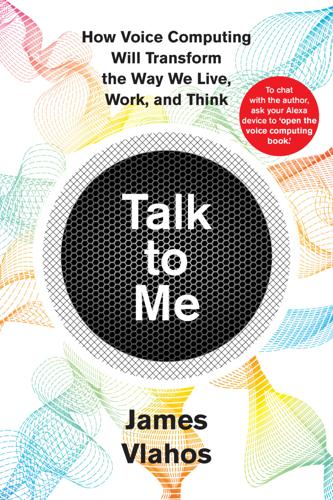
Talk to Me: How Voice Computing Will Transform the Way We Live, Work, and Think
by
James Vlahos
Published 1 Mar 2019
For instance, one player hit on Julia for thirteen straight days, suggesting that he either had a robot fetish or was fooled. Mauldin was pleased. But he wasn’t done working on Julia. In 1991 Mauldin liberated Julia from the labyrinths of TinyMUD and entered her into the first-ever edition of a chatbot competition called the Loebner Prize, which has continued annually to this day. Unlike the experiment within Mauldin’s game, the Loebner Prize, which took place in England, was overtly framed as a Turing test. The setup was that the contest’s handful of judges were instructed to exchange messages over a computer with someone who might either be a chatbot or a real person. But the actual identity was kept secret.
…
The permutations for all of the above were nearly infinite; predicting all but the most obvious was impossible. As Mauldin dryly explained in a postmortem paper about the contest, “Very few of the conversations follow the expected lines of questioning.” The Loebner Prize organizers seemed sympathetic to Mauldin’s plight and that of the other contestants. So they decided that the 1993 version of the Loebner Prize would be a restricted Turing test in which the chatbots were allowed to focus on a single topic of their choosing. Mauldin chose one for Julia that he thought everyone would enjoy: pets. Mauldin knew from his experience the year before that it wouldn’t work to force people down branching preordained conversational paths.
…
(Consider that alums of the DARPA Grand Challenges, an early set of autonomous-vehicle competitions, went on to run the self-driving-car divisions of Google, Ford, Uber, and General Motors.) The victors would also walk away with the Alexa Prize itself—a $1 million purse. The Alexa Prize is not the only contest that tries to squeeze more humanlike rapport out of the world’s chatbots; recall the Loebner Prize, the one that Mauldin entered, from chapter 4. The Loebner Prize, however, has inspired its share of controversy over the years. Critics believe that the deception at the heart of the contest—contestants trying to trick judges into believing that a chatbot is human—encourages gimmickry. For instance, one prize-winning bot presented itself as an insolent teenager to mask its conversational deficits.

Thinking Machines: The Inside Story of Artificial Intelligence and Our Race to Build the Future
by
Luke Dormehl
Published 10 Aug 2016
Now in his seventies, the decision to stage what is now one of the world’s best-known AI competitions only occurred to Loebner when he was well into middle age. The success of what he named the Loebner Prize is all the more surprising given that he has no qualifications whatsoever in computer science. ‘In years to come, there may be richer prizes, and more prestigious contests, but gads, this will always be the oldest,’ Loebner has said, with typical chutzpah. Loebner started the annual Loebner Prize in 1990. Each year it draws ‘chatterbot’ – or ‘chatbot’ – creators from all over the world, as their conversational AIs compete in text-based conversations designed to fool human judges.
…
Mitsuku had no good answer.fn1 Not everyone is enamoured with the Loebner Prize. Marvin Minsky called the competition ‘obnoxious and stupid’. Part of this is down to Hugh Loebner himself, who seems to have an ingrained desire to upset the AI old guard wherever possible. Years ago, he provoked Minsky so much that Minsky finally snapped and said he would put up $100 to whoever could stop Loebner from staging his infernal contest. Loebner argued that since the only way the contest could be stopped was for someone to win its $100,000 grand prize, Minsky was essentially co-sponsoring the Loebner Prize. He wasted no time issuing a press release to say exactly that.
…
Minsky spent years fuming about it. But the other reason some (although not all) serious AI experts dismiss the Loebner Prize is that it is, essentially, a trick of the light. It is reminiscent of a magician who is praised not for his ability to perform genuine magic, but rather for his use of sleight-of-hand and misdirection to create an impressive illusion. ‘Unfortunately, the chatbots of today can only resort to trickery to hopefully fool a human into thinking they are sentient,’ one recent entrant in the Loebner Prize told me. ‘And it is highly unlikely without a yet-undiscovered novel approach to simulating an AI that any chatbot technology employed today could ever fool an experienced chatbot creator into believing they possess [artificial] general intelligence.’

What Algorithms Want: Imagination in the Age of Computing
by
Ed Finn
Published 10 Mar 2017
Hafner, “Researchers Yearn to Use AOL Logs, but They Hesitate”; “AOL User 927 Illuminated.” 44. Anderson, “U Are What U Seek”; Engelberts and Plug, I Love Alaska. 45. Parisian Love. 46. Hayles, My Mother Was a Computer, 173. 47. Jonze, Her. 48. Ibid. 49. Ellwood et al., “‘Her’ Q&A.” 50. The Loebner Prize promises a solid gold medal and $100,000 “for the first computer whose responses [are] indistinguishable from a human’s.” “Home Page of the Loebner Prize.” 51. Turing, “Computing Machinery and Intelligence,” 443. 52. Adams, The Education of Henry Adams, XXV. 53. Plato, Symposium, 9:211d. 3 House of Cards: The Aesthetics of Abstraction There is no solace above or below.
…
Forbes, May 15, 2014. http://www.forbes.com/sites/kashmirhill/2014/05/15/how-google-can-rebelliously-comply-with-europes-right-to-be-forgotten-ruling. Hillis, Ken. Online a Lot of the Time: Ritual, Fetish, Sign. Durham, N.C.: Duke University Press, 2009. “Home Page of the Loebner Prize.” Accessed May 28, 2014. http://www.loebner.net/Prizef/loebner-prize.html. Honan, Mat. “Siri Is Apple’s Broken Promise.” Gizmodo. Accessed May 28, 2014. http://gizmodo.com/5864293/siri-is-apples-broken-promise. “Internet Used by 3.2 Billion People in 2015.” BBC News, May 26, 2015. http://www.bbc.com/news/technology-32884867.
…
While less omnipresent than Google, the company’s influence on digital culture is still striking: on any given day in 2014, roughly a third of all Internet data downloaded during peak periods consisted of streaming files from Netflix.2 By the end of 2013, the company’s 40 million subscribers watched a billion hours of content each month.3 In 2006, Netflix announced a mathematical competition with a million dollar prize: improve the company’s recommendation algorithm by at least 10 percent. Modeled on other contests like DARPA grand challenges and the Loebner Prize (the annual Turing Test competition), the Netflix Prize invited outside researchers to teach them new algorithmic tricks that could improve the efficiency with which they recommended movies to their customers. It was an approach entirely in keeping with the company’s reputation as an early darling of the disruptors: a Silicon Valley firm that was successfully upending a staid economic model.
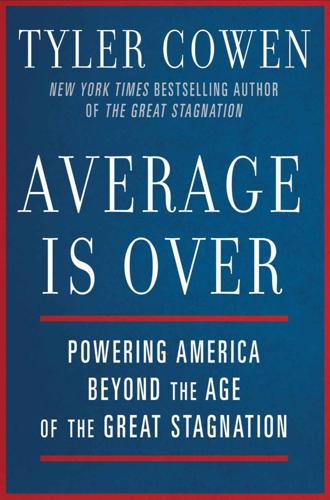
Average Is Over: Powering America Beyond the Age of the Great Stagnation
by
Tyler Cowen
Published 11 Sep 2013
Getting human conversation “right” is a complex, multidimensional problem, highly sensitive to context and background understanding, and so it isn’t easy for a computer program. Here is a dialogue that Teppo Felin, a sociology blogger, had with Rosette, the program that won the 2011 Loebner Prize, which is dedicated to the Turing task: ROSETTE: Hello, again. Did you have a good day? TEPPO: congrats on winning the Loebner prize! ROSETTE: Why are you so excited about this? I think shopping summons up the ancient hunter-gatherer in me. I like having a mission to find something I need or want. Sometimes I’ll research online, to find a great deal, but I like rummaging through Jeremy’s up the road, if I want an outfit for a special occasion, or just for fun.
…
Linden, “The Singularity Is Far: A Neuroscientist’s View,” BoingBoing, July 14, 2011, http://boingboing.net /2011/07/14/far.html. Another useful essay is David Robson, “Your Clever Body: Thinking from Head to Toe,” New Scientist, October 15, 2011. For the dialogue with Rosette, see http://orgtheory.wordpress.com/2011/10/22/2011 -loebner-prize-artificial-intelligence-still-has-a-long-way-to-go/. For a Tyler Cowen and Michelle Dawson paper on Turing, see “What Does the Turing Test Really Mean? And How Many Human Beings (Including Turing) Could Pass?”, June 3, 2009, http://www.gmu.edu/centers/publicchoice/faculty%20pages /Tyler/turingfinal.pdf.
…
, 7, 12, 157 Jobs, Steve, 25 Jones, Benjamin, 216 Journal of the American Statistical Association, 10 journalism, 9 Junior (chess program), 68, 72, 78 Jurafsky, Dan, 12–13 K-12 education, 4, 168, 181–82 Kabbalah, 153 Kahneman, Daniel, 105, 227 Kaiser Family Foundation, 60 Karlan, Dean, 223 Kasparov, Garry, 7, 69, 77, 80–81, 110, 124, 157 Kaufman, Larry, 203 Kempelen, Wolfgang von, 149 Kepler, Johannes, 153 Keynesian economics, 53–54, 56, 226 Khan Academy, 180, 184–85 KIPP schools, 199 Knoxville, Tennessee, 244 Komodo (chess program), 68, 203 Kraai, Jesse, 188 Kramnik, Vladimir, 103, 109, 149–50 Kronrod, Alexander, 68 Krueger, Alan, 59 Krugman, Paul, 180–81, 227 Kurzweil, Ray, 6, 137–38 labor market and age of workers, 41–42, 51–52, 62–63 and benefit costs, 36, 59, 113 careers in the changing market, 41–44 changing worker profiles, 29–40 and computer skills, 21, 33 and conscientiousness of workers, 201–2 and factor price equalization, 163 and global trends, 3–4 and healthcare reform, 238 and hiring costs, 36, 59, 60 important worker characteristics, 32 and income trends, 39 labor economics, 226 and layoffs, 54–55, 57–58, 61 and management, 27–29 and man-machine collaboration, 93 and marketing, 22–27 and outsourcing, 163–71 participation rates, 45, 46, 51 polarization in, 37, 55, 231 and “reshoring” trend, 177 and residential segregation, 247–48 and retraining, 202 and the social contract, 229 laboratory science, 100 land prices, 236, 247 language recognition, 119, 139–41 Latin America, 167–68, 170–71, 242 law and legal issues and the changing labor market, 41 costs of employing labor, 36, 59 lawsuits, 36, 59, 60 lawyer ratings, 121 malpractice suits, 128 and medical diagnosis, 128–29 and reliance on computer systems, 128–31 See also regulatory issues layoffs, 54–55, 57–58, 61 Levitt, Steven, 226–27 liberalism, 252, 253–54 libertarianism, 256–57 lie detection, 12–13, 16 The Lights in the Tunnel (Ford), 6 liquidity crunch, 54, 55 Liu, Runjuan, 164 Loebner Prize, 139–40 logistic function, 203 long-term unemployment, 58 machine intelligence. See artificial intelligence (AI) machine science, 217–20 machine simulations, 200 macroeconomics, 9, 166, 211–12, 226 Makel, Matthew C., 188 malapropisms, 140–41 malpractice suits, 128 Malthusian wages, 136 management, 25, 27–29, 33 mandates, 237–38 Mandel, Michael, 165–66 manual labor, 56 manufacturing sector, 177 marginal costs, 182 marginal tax rates, 234 MarginalRevolution (blog), 90 Maria Theresa of Austria, 148 marketing, 11–12, 22–27, 34, 146 Marzolo, Cyril, 147 Massachusetts Institute of Technology (MIT), 37, 193, 222 master’s degrees, 37 Match Teacher Residency program, 200 Match.com, 9, 96, 98 matchmaking.

The Myth of Artificial Intelligence: Why Computers Can't Think the Way We Do
by
Erik J. Larson
Published 5 Apr 2021
I am sorry to hear you are depressed It’s true. I am unhappy. Do you think coming here will help you not to be unhappy I need some help, that much seems certain.9 But such programs were obvious frauds, judged by the standards of true AI. So was the program that on multiple occasions briefly fooled some judges at the Loebner Prize contest, an annual staging of the Turing test. Media reports eagerly declared that the test had finally been passed, and there was brief but intense fanfare about the progress of AI on its most famous challenge. The chatbot—named Eugene Goostman—was presented as a thirteen-year-old Ukrainian boy, a persona designed to make judges expect (and excuse) grammatical errors and holes in general knowledge.
…
It was also recognition of the momentousness of really passing his test. Imagine, if you can, really chatting with your computer. The Goostman success dangled this perennial sci-fi dream in front of us.2 EUGENE GOOSTMAN IS A FRAUD There was only one problem. Goostman was a fraud. Not long after the London spectacle, which won the Russian team the $100,000 Loebner Prize for passing the Turing test, computer scientists and commentators began complaining. For one, Goostman didn’t really answer questions. He usually changed the topic or blurted out sarcasm. Gary Marcus, then at New York University, wrote in the New Yorker that the Goostman performance was little more than a “parlor trick.”
…
See also Pranav Dixit, “A Computer Program Has Passed the Turing Test for the First Time,” Gizmodo, June 8, 2014. 3. Gary Marcus, “What Comes After The Turing Test?” New Yorker, June 9, 2014. 4. Adam Mann, “That Computer Actually Got an F on the Turing Test,” Wired, June 9, 2014. 5. We could convert Siri or Cortana into a competitor for the Loebner Prize by adding some code like doBabble() or doComplain(), where the arguments are questions or commands from the user. The system would then reliably carp about human requests—say, by always asking why? and then going on like an unwanted guest about how it was tired of always answering that or demanding to talk about something else.

Messy: The Power of Disorder to Transform Our Lives
by
Tim Harford
Published 3 Oct 2016
The computer’s job was to imitate human conversation convincingly enough to confuse the judge.28 Turing optimistically predicted that by the year 2000, computers would be able to fool 30 percent of human judges after five minutes of conversation. He was almost right: in 2008, at an annual Turing test tournament called the Loebner Prize, the best computer came within a single vote of Turing’s benchmark. How? The science writer Brian Christian had an answer: computers are able to imitate humans not because the computers are such accomplished conversationalists, but because we humans are so robotic.29 An extreme example is the “pickup artist” subculture, devoted to seducing women through prescripted interactions.
…
From Marco “Rubot” Rubio’s strange repetitive glitch, to the schwerfällig British generals outmaneuvered by Erwin Rommel, to the managers who try to tie performance down to a reductive target, we are always reaching for tidy answers, only to find that they’re of little use when the questions get messy. Each year that the computers fail to pass the Turing test, the Loebner Prize judges award a consolation prize for the best effort: it is the prize for the Most Human Computer. But there is also a prize for the human confederates who participate in the contest: the Most Human Human. Brian Christian entered the 2009 Loebner contest with the aim of winning that honor. He understood that it was not enough simply to chat away as humans often do, because too much human chat is itself formulaic and robotic.
…
Second, he stepped away from the generic, always looking for the details of the world around him. Chatbots, automated phone menus, and pickup artists flourish in a sterile bubble, devoid of context and history. Human conversation works best when it is rooted in the subtleties of a particular moment. At one point in the 2009 Loebner Prize competition, two participants realized that they were both from Toronto and started geeking out about ice hockey. It was instantly clear that neither of them was a computer. When a Zappos customer service rep realizes that the customer is physically just down the street in Las Vegas, she proves she isn’t a computer, either.
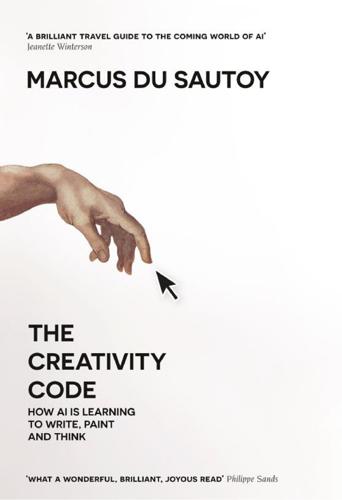
The Creativity Code: How AI Is Learning to Write, Paint and Think
by
Marcus Du Sautoy
Published 7 Mar 2019
Great resource for AlphaGo including all the games with Lee Sedol: https://deepmind.com/research/alphago/. To read The Seeker by thricedotted, see the following link at github, the hosting service for computer code: https://github.com/thricedotted/theseeker. Other novels created as part of NaNoGenMo can be found at: https://nanogenmo.github.io/. Loebner prize transcripts can be found at: https://www.aisb.org.uk/events/loebner-prize. To view works by and articles about AARON: http://aaronshome.com/. To view works by and articles about ‘The Painting Fool’: http://www.thepaintingfool.com/. To see the paintings generated by the Elgammal’s Creative Adversarial Network: https://sites.google.com/site/digihumanlab/home.
…
An algorithmic doctor is expected to have the answers, so ELIZA wouldn’t be much good at diagnosing your illness, but there are algorithms evolving that might be better than your GP at figuring out what’s wrong with you. If you are tempted, you can give ELIZA a spin with the many online versions that still exist on the internet. The challenge of creating a program that could be more flexible and persuasive in its responses was spiced up in the early 1990s by the creation of the Loebner Prize. Underwritten by Hugh Loebner, an inventor and something of an outsider to the mainstream research on AI, the prize invited a panel of judges to interact with a human and a computer for a set period of time and decide which was the AI. If a system could fool half the judges, its creator would receive a silver medal and $25,000.
…
(game show) 260–7, 273 Jie Shan 56 Jockers, Matthew 283 Jones, Jonathan 129–30, 148 Joyce, James 11 Jukedeck 225–6 Jung, Carl 81, 100 kabbalah 207–8 Kafka, Franz 274, 289, 290 Kahana, Eran 109 Kant, Immanuel 4, 105 Kapoor, Anish 118 Kasparov, Garry 29, 260–1 Kazemi, Darius 282 Keats, John 281 Ke Jie 42–3 Kepler’s Conjecture 170 Kerner, Winifred 201 K-456 (robot) 119 Kinect 72–6, 79, 81–2 Klee, Paul 18, 123, 134; Pedagogical Sketchbook 134 Knipe, Adolphe 276–7 Kolof, Lorenz Mizler von 185, 193, 208 Korsten, Bas 129 Kurzweil, Ray 280–1 LabSix 77–8 Laird, Benjamin 281–2 Lampard, Frank 55 language 254–75; Chinese Room experiment and 273–5; ELIZA and 255–7, 259; encryption, algorithms create language to aide 272–3; Jeopardy! and 260–3; Loebner Prize and 257–9; robots and 271–2; translator algorithms 268–71; Turing Test and 254–7, 258, 260, 273; Watson and 261–8, 273; Winograd challenges and 259–60 see also storytelling large numbers, law of 215 Larson, Steve 201 Lascaux cave, France 156 Lawrence, Peter: The Making of a Fly 62–4 Le Corbusier 112 Le Cri de Paris 139 legal system 25, 94–5, 109, 165–6 Legg, Shane 25 Leibniz, Gottfried Wilhelm 186 Les Publications mathématiques de l’IHES 177, 243 Lescure, Jean 278, 279, 282 Levine, Mark: The Jazz Theory Book 214 literature, algorithmic generated 276–97 Littlewood, J.
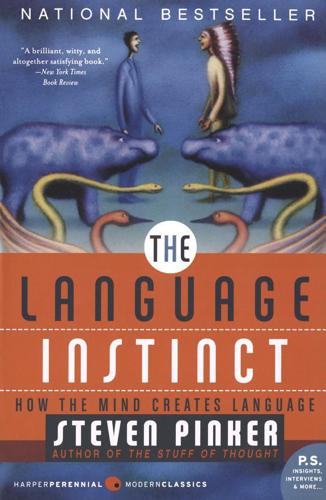
The Language Instinct: How the Mind Creates Language
by
Steven Pinker
Published 1 Jan 1994
To interact with computers we still have to learn their languages; they are not smart enough to learn ours. In fact, it is all too easy to give computers more credit at understanding than they deserve. Recently an annual competition was set up for the computer program that can best fool users into thinking that they are conversing with another human. The competition for the Loebner Prize was intended to implement a suggestion made by Alan Turing in a famous 1950 paper. He suggested that the philosophical question “Can machines think?” could best be answered in an imitation game, where a judge converses with a person over one terminal and with a computer programmed to imitate a person on another.
…
User: Right now I feel like I could cry. Computer: Is it because right now you feel like you could cry that you came to me? To Weizenbaum’s horror, one day he found his secretary transfixed at the terminal, pouring her heart out to the program. Most computer scientists are annoyed by the Loebner Prize competition. They consider it a pointless publicity stunt, because it is an exercise in how to fool an amateur, not how to get computers to use language. (Artificial intelligence researchers and other professionals who are knowledgeable about language were not allowed to act as judges, and none bothered to compete; the submissions were from hobbyists.)
…
Signs were not coordinated into the well-defined motion contours of ASL and were not inflected for aspect, agreement, and so on—a striking omission, since inflection is the primary means in ASL of conveying who did what to whom and many other kinds of information. The trainers frequently claim that the chimps have syntax, because pairs of signs are sometimes placed in one order more often than chance would predict, and because the brighter chimps can act out sequences like Would you please carry the cooler to Penny. But remember from the Loebner Prize competition (for the most convincing computer simulation of a conversational partner) how easy it is to fool people into thinking that their interlocutors have humanlike talents. To understand the request, the chimp could ignore the symbols would, you, please, carry, the, and to; all the chimp had to notice was the order of the two nouns (and in most of the tests, not even that, because it is more natural to carry a cooler to a person than a person to a cooler).
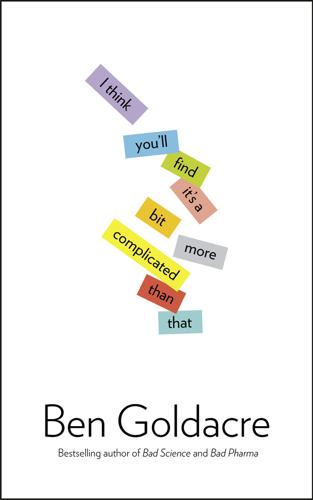
I Think You'll Find It's a Bit More Complicated Than That
by
Ben Goldacre
Published 22 Oct 2014
Reading New Scientist’s chat with Nanniebot, the excellent www.ntk.net/ (Private Eye for geeks) points out that Nanniebot ‘seems to be able to make logical deductions, parse colloquial English, correctly choose the correct moment to scan a database of UK national holidays, comment on the relative qualities of the Robocop series, and divine the nature of pancakes and pancake day’. Jabberwock, the winner of last year’s Loebner Prize for the Turing test, is rubbish in comparison (you can talk to it online and see for yourself). But Jim Wightman, the Nanniebot inventor – whose site claims they’ve passed the Turing test – isn’t entering the Loebner Prize this year. Maybe next year … it’s too buggy. But it’s live on the internet already? Can I test it? Sure. But I want to see with my own eyes that there’s not a real human being somewhere tapping out the answers, I explain.
…
263 heart attack 8, 9, 79, 119–20, 134–6, 172, 173, 174–6, 209–10, 265 Hegarty LLP 256 Helicobacter pylori 9 hepatitis B 233, 356 hepatitis C 225, 233 heroin, xx, 221–4, 225–44 hierarchies of evidence 359 highly active antiretroviral therapy (HAART) 140 Hinkley Point 95–6 HIV 182–7, 225, 233–4, 244, 254, 281–3, 284, 285, 286 see also Aids Hodgkinson, Neville 283 Holfordwatch 252 Holt, Peter 19 Home Office xix, 157, 158, 159, 163, 193, 230, 232 home taping 159–62 homeopathy xvii, 20–1, 124, 137, 194, 262, 264, 304, 321–4, 389 Homeopathy News 389 homosexuality: age and 92–4; mental illness and 312–13 hormone-replacement therapy (HRT) 8–9 Hospital Episodes Statistics 18 Houben, Rom 324–6 House of Numbers (film) 281–3, 284 How to be Beautiful (Murray) 387 HPV 334 Huff, Darrell: How to Lie with Statistics 89–91 Hussein, Saddam 316–17 Hutton, John 221, 224 hypoactive sexual desire disorder (HSDD) 38 IARC (International Agency for Research on Cancer) 116 ICM 96 ignoring results from people you don’t trust 20–2 Imperial College 285 inclusion body myositis (IBM) 26, 27 Independent External Review for Department of Education on improving use if evidence and data in schools 202n Independent 29, 61, 197, 345, 390 Insight Cube™ 154 Institute of Child Health 120 intelligent design 13 International Journal of Evidence-Based Healthcare: ‘Deconstructing the Evidence-Based Discourse in Health Sciences: Truth, Power and Fascism’ (International Journal of Evidence-Based Healthcare) 297 International Journal of Obesity 338 International Journal of Psychology 15–16 internet use, autism and 3 The Internet’s Own Boy (documentary) 34 Interphone 118 Ioannidis, Professor John 9–10, 132, 133 Ion-Conditioning Hairdryer 388 IQ scores, gradual improvement in 188 Iraq, detecting bombs in 273–5; weapons of mass destruction (WMD) in 316–17 irrationality, science of xxi, 301–26; cigarette packaging 318–21; crime, outrage is lower when a criminal has more victims xxi, 306–9; evidence-based smear campaigns 316–18; facilitated communication in coma patients 324–6; female musicians’ clothing and performance 309–11; illusions of control 305–6; nocebo effect 321–4; pre-existing view, scientific evidence that challenges a 311–13; superstition and improved performance 313–15; visualisation and fruit intake 303–4 IVF 107, 180, 181 Jack of Kent (blogger) 252 Jammeh, Yahya 182 JCVI (Joint Committee on Vaccination and Immunisation) 353 Jill Dando Institute 163 Johnson, Alan 22, 24 Johnston, Lucy 333 Jordan, David Starr: Higher Foolishness 262 Journal of Aids 139 Journal of Applied Social Psychology 312 Journal of Public Health Nutrition 337 Journal of the American Chemical Society (JACS) 135 Journal of the American Medical Association (JAMA) 11, 12 Journal of Trionic Physics 388 Journal of Wine Research 125 journalism, bad xxi–xxii, 327–67; academic PR, dodgy 358–60; breast cancer and diet 338–40; caveats, hidden 338–40; cervical cancer jab, dangers of 331–4; exercise, weight gain and 335–8; fish oil and concentration 343–7; journalists linking to primary sources 340–2; MMR and 347–58; rape, women’s clothing, alcohol and 329–31; Roger Coghill and ‘the Aids test’ 363–7; suicide and phone masts 363–5; suicide, press coverage of details of 361–3 JSTOR 32–4 Kelsey, Tim 80, 81 Kelvedon Hatch secret nuclear bunker 94 Kemshall, Professor Hazel 158 Kenyon, Paul 289–90 King’s College London: Mobile Phones Research Unit 125 King’s Fund 19, 176 Kirlian photography 387 Krügel, Danie 275–7 Labour Party 59, 150, 155–6, 176, 177 Ladies Home Journal 44 Lancet 118, 121, 140, 145 Lansley, Andrew 171–4 Laureys, Professor Steven 326 Lawrence, Nikki 267 LayScience 252 libel xvii, xx, 245–58; BCA sue Simon Singh 250–4; breast enhancement cream 254–7; Dr Gillian McKeith calls Bad Science ‘lies’ 257–8; NMT sue Dr Peter Wilmshurst 247–50 libido problems, brain and 37–9 ‘Lindsay Syndrome’ 305–6 lipid-lowering drugs 119–20 local council overspending xix, 152–4 ‘locked-in syndrome’ 324, 325 Loebner Prize 392 London Raindance Film Festival 284 LSD 230 lucky ball xxi, 314 lung cancer 22, 107–9, 319 Lysenko, Trofim 262–3 McDonnell, Mary 307 McKee, Martin 175–6 McKeith, Gillian xvii, xx, 257–8 McTimoney Chiropractic Association (MCA) 253, 254 Maggiore, Christine 283, 285, 286 Maggiore, Eliza Jane 283, 286 magic boxes xxi, 271–8; ADE 651 273–5; bioresonance 277–8; Krügel missing people locator 275–7 magnetic wine 122–6 Manchester Evening News 155 Manning, Julia 180 Marcus, Adam 134 Marketing Innovations Inc. 21 Martin, Simon 278 masturbation, nasal congestion and 139, 143–6 maths, decline in quality of UK 194–6 MBA California Facial Mask 309 Mbeki, Thabo 185, 285 ‘Measuring the Mathematics Problem’ report, Engineering Council 190 Medical Hypotheses 139–46; AIDS denialism 138–41; ‘Down Subjects and Oriental Population Share Several Specific Attitudes and Characteristics’ article 139, 141–3; masturbation as a treatment for nasal congestion, articles discussing benefits and side effects of 139, 143–6 Medical Research Council 252 Medicines and Healthcare Regulatory Authority, The 321–2 Medline 125, 141 Melville, Caspar 281, 283 Merck 333 meta-analysis 235, 304, 359, 401 methadone 227–9, 231, 234–43 Metro 37–8, 66–7 MI5 52 microfinance 204–5 miniature steam railways xxii, 379–81 Ministry of Defence (MoD) 221–3 MinistryofTruth 252 ‘Miracle Mineral Solution’ 12 MIT 32–3 MMR jab 85, 304; Bad Science column manifesto and 399; Lancet 1998 paper on MMR, autism and bowel problems 145, Lucy Johnston stories on 333; return of scare stories about 347–58 mobile phones: cancer and 116–18, 290; council spending and 153, 154; electrosensitivity and 292; stalking your girlfriend using xxii, 382–3; suicides and phone masts 363–7 Mobile Phones Research Unit, King’s College London 125 Monbiot, George 32 Morgan, Rhys 12 Mozambique 183–4 MRI machines 37–9 MRSA 124 Mullen, Dr Michael 249 Mulrow, Celia 6 multiple sclerosis 356 Munro, Professor Geoffrey 312 Muntoni, Francesco 121 Murray, Dale 274 music piracy xix, 159–62 ‘Nanniebots’, search for paedophiles and 391–5 nasal congestion, masturbation and 139, 143–6 Nash, Barbara 268–9 National Autistic Society 325 National Centre for the Replacement, Refinement and Reduction of Animals in Research, The 137 National Down Syndrome Cytogenetic Register 62, 63 National Explosive Engineering Sciences Security Center, Sandia Labs 274 National Institute for Health Research (NIHR) 216 Nature Neuroscience 129, 131 Nature Reviews Neuroscience 38 Nazis 22, 23, 262, 300 Nelson, Fraser 284, 285, 286 Nerdydaytrips.com 381 network theory 26–8 neuroscience xix, 37–9, 129, 130–1, 138 Neverland Systems 393 Nevirapine 186 New England Journal of Medicine 9 New Humanist 281 New Scientist xxii, 391, 393, 394, 395 New York Herald Tribune 261 New York Times 39, 273, 274–5 New York University 297 Newsnight 197 NHS xix; abortion and 90–1; Cancer Plan 170; care.data and 78–86; coalition government reforms xix, 73, 169–77; constitution 180; GP Consortiums 171–4, 175, 176; NHS Choices website 18, 63; NHS Information Centre (NHSIC) 84, 85, 170; ‘NHS Operating Framework’ 172; pornography for sperm donors xix, 179–82; price-based competition in 172–3, 174–5; Primary Care Research Network 216; Primary Care Trusts 171–2; waiting times 73–5; ‘Working Together For A Stronger NHS’ government leaflet 169 Nield, Dr Dalia 255–6 Nieuwenhuis, Sander 129, 130–1 Nigeria: polio vaccine scare in 273, 356–7 9/11 13 ‘95 per cent confidence intervals’ 59–61 NMT 247–50 nocebo effect 321–4 Nolte, Ellen 175–6 Nordgren, Loran 307 NSA (National Security Agency), US 79–80 NSPCC 394 ntk.net 391 nuclear power xvi, xxii, 85, 94, 95–7, 379, 381 O’Connor, Cardinal Cormac Murphy 183 Observer: Denis Campbell MMR stories 347–55; Denis Campbell ‘fish oil helps schoolchildren to concentrate’ story 343–7; ‘Forensic DNA Tests “Reveal Traces of Madeleine’s Body on Resort Beach”’ story 276 OECD 175 Office of Fair Trading 265 Office of National Statistics (ONS): ‘Annual Survey of Hours and Earnings’ 150–2; births per year statistics 49–50; exam results and 189; ‘Labour Market’ figures 59; Statistical Bulletin 49–50 Olympics: 1992 156; 2012 xix, 155–7 Omand, Sir David 51–3 omega-3 fatty acids 343–6 The One Show 12 open data 20, 80, 85 Open Data (government initiative) 85 Opera Solutions 153–4 Oransky, Ivan 134 organic food xix, 191–4 Overfield, Dr Derek 57 Oxford University 3, 4, 5, 138, 194 Oxygizer 390–1 paedophiles, ‘Nanniebots’ and 391–5 Page, Dawn 268, 269–70 Pain 322 Pakistan 231, 232, 357 Panorama: wi-fi link to radiation story xxi, 289–91, 293 Parker, Matt 68, 69 Parliament 76, 84, 85, 196–7, 200–1, 322 Parry, Vivienne 353 peer review xvii, 4–5, 29, 139–41, 145; alternatives to 139–41, 145–6; dodgy peer reviewers delaying publication of findings they don’t like 10; GP fundholding and 176–7; journals deliberately not peer reviewed 145–6; post-publication xvi, 4–5; problematic nature of 138–41; putting a finding in a press release but not into the paper as a subversion of 66; refusal to submit ideas to 3–5 Pell, Cardinal George 183 Perfect Sommelier 123, 124 Perry, Simon 252–3, 266 pesticides, food and 191–4 Pfizer Trovan drug trial 357 Phelan, Jo: ‘Genetic Bases of Mental Illness – a Cure for Stigma?’
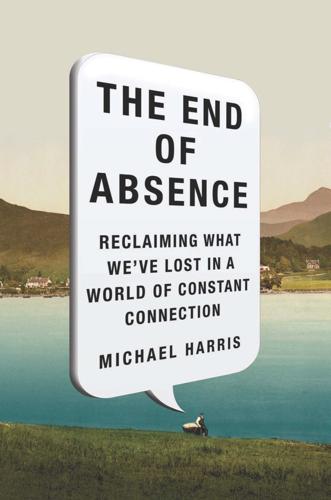
The End of Absence: Reclaiming What We've Lost in a World of Constant Connection
by
Michael Harris
Published 6 Aug 2014
Turing proposed that a machine could be called “intelligent” if people exchanging text messages with that machine could not tell whether they were communicating with a human. (There are a few people I know who would fail such a test, but that is another matter.) This challenge—which came to be called “the Turing test”—lives on in an annual competition for the Loebner Prize, a coveted solid-gold medal (plus $100,000 cash) for any computer whose conversation is so fluid, so believable, that it becomes indistinguishable from a human correspondent.7 At the Loebner competition (founded in 1990 by New York philanthropist Hugh Loebner), a panel of judges sits before computer screens and engages in brief, typed conversations with humans and computers—but they aren’t told which is which.
…
., III, 84–85 “He Poos Clouds” (Pallett), 164 History of Reading, A (Manguel), 16, 117, 159 Hollinghurst, Alan, 115 Holmes, Sherlock, 147–48 House at Pooh Corner, The (Milne), 93 Hugo, Victor, 20–21 “Idea of North, The” (Gould), 200–201 In Defense of Elitism (Henry), 84–85 Information, The (Gleick), 137 information retrieval, 141–42 Innis, Harold, 202 In Search of Lost Time (Proust), 160 Instagram, 19, 104, 149 Internet, 19, 20, 21, 23, 26–27, 55, 69, 125, 126, 129, 141, 143, 145, 146, 187, 199, 205 brain and, 37–38, 40, 142, 185 going without, 185, 186, 189–97, 200, 208–9 remembering life before, 7–8, 15–16, 21–22, 48, 55, 203 Internship, The, 89 iPad, 21, 31 children and, 26–27, 45 iPhone, see phones iPotty, 26 iTunes, 89 Jobs, Steve, 134 Jones, Patrick, 152n Justification of Johann Gutenberg, The (Morrison), 12 Kaiser Foundation, 27, 28n Kandel, Eric, 154 Kaufman, Charlie, 155 Keen, Andrew, 88 Kelly, Kevin, 43 Kierkegaard, Søren, 49 Kinsey, Alfred, 173 knowledge, 11–12, 75, 80, 82, 83, 86, 92, 94, 98, 141, 145–46 Google Books and, 102–3 Wikipedia and, 63, 78 Koller, Daphne, 95 Kranzberg, Melvin, 7 Kundera, Milan, 184 Lanier, Jaron, 85, 106–7, 189 latent Dirichlet allocation (LDA), 64–65 Leonardo da Vinci, 56 Lewis, R. W. B., 117 LinkedIn, 175 literacy, 13 Loebner, Hugh, 60 Loebner Prize, 60 Long Now Foundation, 204 “Look at ME,” 69 love, 176, 177 Luddites, 18, 207–8, 209 Luther, Martin, 12, 20 “Machine Stops, The” (Forster), 106–7, 109 Maeterlinck, Maurice, 5 magazines, 26–28, 45–46, 102 Malaysia, 1–2, 19 Man, John, 12n, 103 Manguel, Alberto, 16–17, 117, 117n, 159 Manhunt, 165 maps, 35, 98 Marx, Groucho, 17 Marx, Karl, 12n massive open online courses (MOOCs), 95–98 Matrix, The, 44–45 McGraw, Phil, 63 McLuhan, Marshall, 14, 34–35, 99, 179, 194, 201, 205 memes, 41–43 technology-based, 42–44 memorization, 145, 151–52, 156–59 memory, 32–33, 35, 40, 137–63 of absence, 202–3 brain and, 139, 140, 142, 146, 151–53, 155, 158 computer, 148, 149, 151, 152, 154–56 fear-based, 155–56 Google and, 143–47 group (transactive), 142–43 method of loci and, 146–47, 148 Molaison and, 138 off-loaded, 140–43, 145, 151, 155 of pre-Internet life, 7–8, 15–16, 21–22, 48, 55, 203 reconsolidation and, 154, 155 search engines and, 142–43, 146 Timehop and, 148–51, 160 memory palace, 146–47 Mesopotamia, 81 Microsoft, 64n Bing, 62 Windows, 43 Miller, Geoffrey, 105 Milne, A.
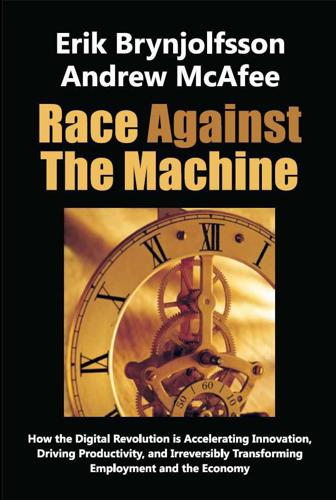
Race Against the Machine: How the Digital Revolution Is Accelerating Innovation, Driving Productivity, and Irreversibly Transforming Employment and the Economy
by
Erik Brynjolfsson
Published 23 Jan 2012
The “Turing test” involves a test group of people having online chats with two entities, a human and a computer. If the members of the test group can’t in general tell which entity is the machine, then the machine passes the test. Turing himself predicted that by 2000 computers would be indistinguishable from people 70% of the time in his test. However, at the Loebner Prize, an annual Turing test competition held since 1990, the $25,000 prize for a chat program that can persuade half the judges of its humanity has yet to be awarded. Whatever else computers may be at present, they are not yet convincingly human. But as the examples in this chapter make clear, computers are now demonstrating skills and abilities that used to belong exclusively to human workers.
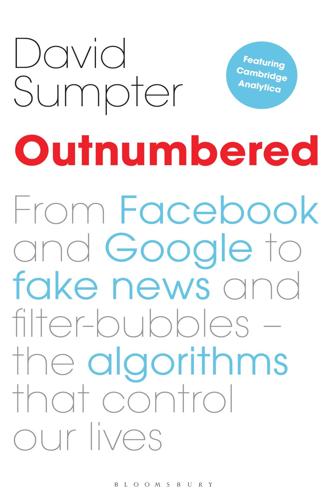
Outnumbered: From Facebook and Google to Fake News and Filter-Bubbles – the Algorithms That Control Our Lives
by
David Sumpter
Published 18 Jun 2018
My ‘cat and dog’ algorithm is constrained by grammar, alternating patterns of verbs and nouns as well as stylistic requirements – an insistence that it is cats and dogs that fight each other. It is also creative in its random choice of verbs. Logical rules and random creativity are central components of the chatbot, Mitsuku, which won the Loebner Prize in both 2016 and 2017 for being the most human-like bot. She takes in the sentence generated by the person she is talking to, uses grammatical rules of the English language to pick out nouns and verbs and then generates replies. Her replies include a degree of randomness. When I asked Mitsuku if she always answers the same way to every question, she told me: ‘Not always; my botmaster has programmed me with more than 8MB of replies.’
…
Oriol and Quoc paid Mechanical Turk workers to compare Julia with a top-down bot, called Cleverbot, to see which approach gave the best answers. Julia scored a narrow victory over Cleverbot. But from what I have read, I’m not sure she would beat Mitsuku. It would be fascinating to see them in a talk-off at the Loebner Prize competition. Let’s get back to reality here. What exactly is Julia? Mitsuku was limited by the time that Steve Worswick could realistically invest answering every possible question someone might pose to his bot. What are Julia’s limits? If we fed her a few hundred million more movie scenes, would she become even more realistic?

Heart of the Machine: Our Future in a World of Artificial Emotional Intelligence
by
Richard Yonck
Published 7 Mar 2017
Except that Robert was Dr. Robert Epstein, the former editor-in-chief of Psychology Today magazine, who has written numerous books on relationships and love and is one of the leading experts on human-machine interactions—more specifically, chatbots. In fact, in the 1990s, Epstein directed the Loebner Prize Competition in Artificial Intelligence, a contest in which judges attempt to distinguish conversations with computer programs from those with real people. To top it all off, Robert admits to having been tricked again by another chatbot not long after the first incident. In this case, he didn’t even make the discovery himself but was contacted by the chatbot’s programmer in the UK.
…
See implantable medical devices (IMDs) Immersive Labs, 144 impersonators, 141 implantable medical devices (IMDs), 167 implantable neuro-stimulation systems, 125–126 IMRSV, 72, 74–75 Indiegogo, 86 inferior frontal gyrus (IFG), 16, 23 information gathering and law enforcement, 142–143 Institute of Electrical and Electronics Engineers (IEEE), 45–46, 58 Intel, 217 intelligence development of, 257–259 and EQ, 202, 252, 257 ranges of, 255–257 intelligence explosion, 208, 241, 261–264 intercranial electroencephalography, 213 interface, 27–28 International Committee for Robot Arms Control (ICRAC), 130–131 International Joint Conference on Artificial Intelligence, 132 internet dating and chatbots, 140–141 Internet of Things, 137–138, 223 Introspective-consciousness, 243, 245, 250–251, 270 invasive brain-computer interface (BCI), 126 IRC, 210 iRobot, 200 iSET, 60 Ishiguro, Hiroshi, 100–101 J James, William, 17–18 James-Lange theory, 17–18, 214 ’Jaynes, Julian, 250, 257 Jennings, Ken, 233 Jentsch, Ernst, 96 Jeopardy, 197, 233 Jibo, 86 Johnson, Brian David, 168 Junko Chihira, 87 K Kairos, 144 Kappas, Arvid, 19 Kasparov, Gary, 232–233 Kelly, Kevin, 23, 267, 271–272 Kenyanthropus platyops, 10, 12–13 Kernal, 205 Kidd, Cory, 85–86 Kiiroo, 188 Kismet, 85 Knewton, 117–118 Kryder’s law, 40, 147 Kubrick, Stanley, 232 Kurzweil, Ray, 39, 41, 110, 174–175, 261–264 L LaBrie, Erika, 187 Lange, Carl, 17–18 Lars and the Real Girl (Oliver/Gillespie), 193 last common ancestor (LCA), 14 Laurel, Brenda, 27 law enforcement and information gathering, 142–143 Law of Accelerating Returns, 41, 261–264 Lawrence Livermore National Lab, the University of California at San Francisco, 125–126 The Laws of Thought (Boole), 37 Leading Futurists, 173–174 Leakey, Louis, 12 Leakey, Mary, 12 learning and AI teacher assistants, 120–121 autistic children and affective computing, 108–114 and CERTS, 114–115 Knewton and adaptive learning technology, 117–118 and robot tutors, 115–117 LeDoux, Joseph, 247 Leibniz, Gottfried Wilhelm, 36 Leonardo, 85 Levanon, Yoram, 72, 265 Levy, David, 185 “Liar!” (Asimov), 231 lie detection, 143–144 Lie to Me, 55 LIGO’s direct detection of gravitational waves, 272 limbic system, 19, 45, 205 Linden Labs, 189 LISP (1958), 37 Loebner Prize Competition in Artificial Intelligence, 141 Logic Theorist (1956), 37 loneliness scale, UCLA, 153–154 long-term potentiation (LTP), 126 Lorenz, Konrad, 187 Love and Sex with Robots (Levy), 185 Luddism, 266 M MacDorman, Karl, 97, 99 machine consciousness, 193, 270. See also consciousness and AI machine logic, 36 Machine Perception Laboratory, 114–115 “The Machine Stops” (Forster), 229 Madame Tussauds Wax Museum, 100 magnetoencephalography (MEG), 126–127 Mahaffie, John, 173–174 Mahoor, Mohammad, 113 The Man Who Tasted Shapes (Cytowick, Richard), 45 Manber, Udi, 39 Mandy, digital assistant, 3–4, 74, 161–162 Manhattan Project, 272 marketing and affective computing, 138–139 Mars Needs Moms (Breathed/Wells), 95–96 massive open online courses (MOOCs), 120–121 Matrix scenario, 262–263 The Media Equation (Nass and Reeves), 28, 50–51 Media Lab, MIT, 42, 52–53, 56–57, 61 Medtronic, 125–126 Mehrabian, Albert, 25–26 memory and emotion, 21 memory formation, 110, 115, 145 Metcalfe’s law, 40, 147 METI.
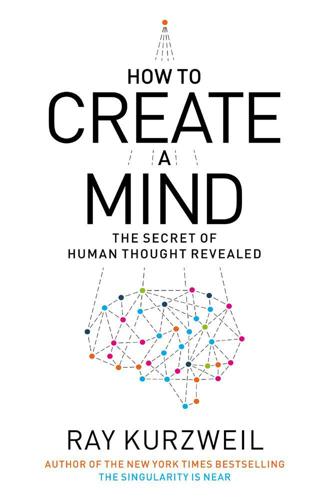
How to Create a Mind: The Secret of Human Thought Revealed
by
Ray Kurzweil
Published 13 Nov 2012
It can also consider a trend that goes beyond just the last two generations. 12. Dileep George, “How the Brain Might Work: A Hierarchical and Temporal Model for Learning and Recognition” (PhD dissertation, Stanford University, June 2008). 13. A. M. Turing, “Computing Machinery and Intelligence,” Mind, October 1950. 14. Hugh Loebner has a “Loebner Prize” competition that is run each year. The Loebner silver medal will go to a computer that passes Turing’s original text-only test. The gold medal will go to a computer that can pass a version of the test that includes audio and video input and output. In my view, the inclusion of audio and video does not actually make the test more challenging. 15.
…
(TV show), 6–7, 108, 157–58, 160, 165, 166, 167, 168, 169, 172, 178, 232–33, 270 Joyce, James, 55 Kasparov, Garry, 39, 166 K Computer, 196 knowledge bases: AI systems and, 4, 6–7, 170–71, 246, 247 of digital neocortex, 177 exponential growth of, 3 as inherently hierarchical, 220 language and, 3 professional, 39–40 as recursively linked ideas, 3 Kodandaramaiah, Suhasa, 126 Koene, Randal, 89 Koltsov, Nikolai, 16 Kotler, Steven, 278 KurzweilAI.net, 161 Kurzweil Applied Intelligence, 144 Kurzweil Computer Products, 122 Kurzweil Voice, 160 lamina 1 neurons, 97 language: chimpanzees and, 3, 41 and growth of knowledge base, 3 hierarchical nature of, 56, 159, 162, 163 as metaphor, 115 as translation of thinking, 56, 68 language software, 51, 72–73, 92, 115–16, 122–23, 144–45, 145, 156, 157–72, 174, 270 expert managers in, 166–67 hand-coded rules in, 164–65, 166, 168 HHMMs in, 167–68 hierarchical systems in, 162–65 Larson, Gary, 277 “Last Voyage of the Ghost, The” (García Márquez), 3–4 lateral geniculate nucleus, 95, 100 law of accelerating returns (LOAR), 4, 6, 7, 41, 123 as applied to human brain, 261–63, 263, 264, 265 biomedicine and, 251, 252, 253 communication technology and, 253, 254 computation capacity and, 281, 316n–19n information technology and, 4, 249–57, 252, 257, 258, 259, 260, 261, 261 objections to, 266–82 predictions based on, 256–57, 257, 258, 259, 260, 261 and unlikelihood of other intelligent species, 5 “Law of Accelerating Returns, The” (Kurzweil), 267 laws of thermodynamics, 37, 267 learning, 61–65, 122, 155, 273–74 conditionals in, 65 and difficulty of grasping more than one conceptual level at a time, 65 in digital neocortex, 127–28, 175–76 environment and, 119 Hebbian, 80 hierarchical, 164, 195, 197 in neural nets, 132–33 neurological basis of, 79–80 pattern recognition as basic unit of, 80–81 of patterns, 63–64, 90 recognition as simultaneous with, 63 simultaneous processing in, 63, 146 legal systems, consciousness as basis of, 212–13 Leibniz, Gottfried Wilhelm, 34, 223 Lenat, Douglas, 162 Leviathan (Hobbes), 278 Lewis, Al, 93 Libet, Benjamin, 229–30, 231, 234 light, speed of, 281 Einstein’s thought experiments on, 18–23 linear programming, 64 LISP (LISt Processor), 153–55, 163 pattern recognition modules compared with, 154, 155 Lloyd, Seth, 316n, 317n Loebner, Hugh, 298n Loebner Prize, 298n logic, 38–39 logical positivism, 220 logic gates, 185 Lois, George, 113 love, 117–20 biochemical changes associated with, 118–19 evolutionary goals and, 119 pattern recognition modules and, 119–20 “Love Is the Drug,” 118 Lovelace, Ada Byron, Countess of, 190, 191 lucid dreaming, 72, 287n–88n Lyell, Charles, 14–15, 114, 177 McCarthy, John, 153 McClelland, Shearwood, 225 McGinn, Colin, 200 magnetic data storage, growth in, 261, 301n–3n magnetoencephalography, 129 Manchester Small-Scale Experimental Machine, 189 Mandelbrot set, 10–11, 10 Marconi, Guglielmo, 253 Mark 1 Perceptron, 131–32, 134, 135, 189 Markov, Andrei Andreyevich, 143 Markram, Henry, 80–82, 124–27, 129 mass equivalent, of energy, 22–23 Mathematica, 171 “Mathematical Theory of Communication, A” (Shannon), 184 Mauchly, John, 189 Maudsley, Henry, 224 Maxwell, James Clerk, 20 Maxwell, Robert, 225 Mead, Carver, 194–95 medial geniculate nucleus, 97, 100 medicine, AI and, 6–7, 39, 108, 156, 160–61, 168 memes: consciousness as, 211, 235 free will as, 235 memory, in computers, 185, 259, 260, 268, 301n–3n, 306n–7n memory, memories, human: abstract concepts in, 58–59 capacity of, 192–93 computers as extensions of, 169 consciousness vs., 28–29, 206–7, 217 dimming of, 29, 59 hippocampus and, 101–2 as ordered sequences of patterns, 27–29, 54 redundancy of, 59 unexpected recall of, 31–32, 54, 68–69 working, 101 Menabrea, Luigi, 190 metacognition, 200, 201 metaphors, 14–15, 113–17, 176–77 Michelson, Albert, 18, 19, 36, 114 Michelson-Morley experiment, 19, 36, 114 microtubules, 206, 207, 208, 274 Miescher, Friedrich, 16 mind, 11 pattern recognition theory of (PRTM), 5–6, 8, 11, 34–74, 79, 80, 86, 92, 111, 172, 217 thought experiments on, 199–247 mind-body problem, 221 Minsky, Marvin, 62, 133–35, 134, 199, 228 MIT Artificial Intelligence Laboratory, 134 MIT Picower Institute for Learning and Memory, 101 MobilEye, 159 modeling, complexity and, 37–38 Modha, Dharmendra, 128, 195, 271–72 momentum, 20–21 conservation of, 21–22 Money, John William, 118, 119 montane vole, 119 mood, regulation of, 106 Moore, Gordon, 251 Moore’s law, 251, 255, 268 moral intelligence, 201 moral systems, consciousness as basis of, 212–13 Moravec, Hans, 196 Morley, Edward, 18, 19, 36, 114 Moskovitz, Dustin, 156 motor cortex, 36, 99 motor nerves, 99 Mountcastle, Vernon, 36, 37, 94 Mozart, Leopold, 111 Mozart, Wolfgang Amadeus, 111, 112 MRI (magnetic resonance imaging), 129 spatial resolution of, 262–65, 263, 309n MT (V5) visual cortex region, 83, 95 Muckli, Lars, 225 music, as universal to human culture, 62 mutations, simulated, 148 names, recalling, 32 National Institutes of Health, 129 natural selection, 76 geologic process as metaphor for, 14–15, 114, 177 see also evolution Nature, 94 nematode nervous system, simulation of, 124 neocortex, 3, 7, 77, 78 AI reverse-engineering of, see neocortex, digital bidirectional flow of information in, 85–86, 91 evolution of, 35–36 expansion of, through AI, 172, 266–72, 276 expansion of, through collaboration, 116 hierarchical order of, 41–53 learning process of, see learning linear organization of, 250 as metaphor machine, 113 neural leakage in, 150–51 old brain as modulated by, 93–94, 105, 108 one-dimensional representations of multidimensional data in, 53, 66, 91, 141–42 pattern recognition in, see pattern recognition pattern recognizers in, see pattern recognition modules plasticity of, see brain plasticity prediction by, 50–51, 52, 58, 60, 66–67, 250 PRTM as basic algorithm of, 6 pruning of unused connections in, 83, 90, 143, 174 redundancy in, 9, 224 regular grid structure of, 82–83, 84, 85, 129, 262 sensory input in, 58, 60 simultaneous processing of information in, 193 specific types of patterns associated with regions of, 86–87, 89–90, 91, 111, 152 structural simplicity of, 11 structural uniformity of, 36–37 structure of, 35–37, 38, 75–92 as survival mechanism, 79, 250 thalamus as gateway to, 100–101 total capacity of, 40, 280 total number of neurons in, 230 unconscious activity in, 228, 231, 233 unified model of, 24, 34–74 as unique to mammalian brain, 93, 286n universal processing algorithm of, 86, 88, 90–91, 152, 272 see also cerebral cortex neocortex, digital, 6–8, 41, 116–17, 121–78, 195 benefits of, 123–24, 247 bidirectional flow of information in, 173 as capable of being copied, 247 critical thinking module for, 176, 197 as extension of human brain, 172, 276 HHMMs in, 174–75 hierarchical structure of, 173 knowledge bases of, 177 learning in, 127–28, 175–76 metaphor search module in, 176–77 moral education of, 177–78 pattern redundancy in, 175 simultaneous searching in, 177 structure of, 172–78 virtual neural connections in, 173–74 neocortical columns, 36–37, 38, 90, 124–25 nervous systems, 2 neural circuits, unreliability of, 185 neural implants, 243, 245 neural nets, 131–35, 144, 155 algorithm for, 291n–97n feedforward, 134, 135 learning in, 132–33 neural processing: digital emulation of, 195–97 massive parallelism of, 192, 193, 195 speed of, 192, 195 neuromorphic chips, 194–95, 196 neuromuscular junction, 99 neurons, 2, 36, 38, 43, 80, 172 neurotransmitters, 105–7 new brain, see neocortex Newell, Allen, 181 New Kind of Science, A (Wolfram), 236, 239 Newton, Isaac, 94 Nietzsche, Friedrich, 117 nonbiological systems, as capable of being copied, 247 nondestructive imaging techniques, 127, 129, 264, 312n–13n nonmammals, reasoning by, 286n noradrenaline, 107 norepinephrine, 118 Notes from Underground (Dostoevsky), 199 Nuance Speech Technologies, 6–7, 108, 122, 152, 161, 162, 168 nucleus accumbens, 77, 105 Numenta, 156 NuPIC, 156 obsessive-compulsive disorder, 118 occipital lobe, 36 old brain, 63, 71, 90, 93–108 neocortex as modulator of, 93–94, 105, 108 sensory pathway in, 94–98 olfactory system, 100 Oluseun, Oluseyi, 204 OmniPage, 122 One Hundred Years of Solitude (García Márquez), 283n–85n On Intelligence (Hawkins and Blakeslee), 73, 156 On the Origin of Species (Darwin), 15–16 optical character recognition (OCR), 122 optic nerve, 95, 100 channels of, 94–95, 96 organisms, simulated, evolution of, 147–53 overfitting problem, 150 oxytocin, 119 pancreas, 37 panprotopsychism, 203, 213 Papert, Seymour, 134–35, 134 parameters, in pattern recognition: “God,” 147 importance, 42, 48–49, 60, 66, 67 size, 42, 49–50, 60, 61, 66, 67, 73–74, 91–92, 173 size variability, 42, 49–50, 67, 73–74, 91–92 Parker, Sean, 156 Parkinson’s disease, 243, 245 particle physics, see quantum mechanics Pascal, Blaise, 117 patch-clamp robotics, 125–26, 126 pattern recognition, 195 of abstract concepts, 58–59 as based on experience, 50, 90, 273–74 as basic unit of learning, 80–81 bidirectional flow of information in, 52, 58, 68 distortions and, 30 eye movement and, 73 as hierarchical, 33, 90, 138, 142 of images, 48 invariance and, see invariance, in pattern recognition learning as simultaneous with, 63 list combining in, 60–61 in neocortex, see pattern recognition modules redundancy in, 39–40, 57, 60, 64, 185 pattern recognition modules, 35–41, 42, 90, 198 autoassociation in, 60–61 axons of, 42, 43, 66, 67, 113, 173 bidirectional flow of information to and from thalamus, 100–101 dendrites of, 42, 43, 66, 67 digital, 172–73, 175, 195 expectation (excitatory) signals in, 42, 52, 54, 60, 67, 73, 85, 91, 100, 112, 173, 175, 196–97 genetically determined structure of, 80 “God parameter” in, 147 importance parameters in, 42, 48–49, 60, 66, 67 inhibitory signals in, 42, 52–53, 67, 85, 91, 100, 173 input in, 41–42, 42, 53–59 love and, 119–20 neural connections between, 90 as neuronal assemblies, 80–81 one-dimensional representation of multidimensional data in, 53, 66, 91, 141–42 prediction by, 50–51, 52, 58, 60, 66–67 redundancy of, 42, 43, 48, 91 sequential processing of information by, 266 simultaneous firings of, 57–58, 57, 146 size parameters in, 42, 49–50, 60, 61, 66, 67, 73–74, 91–92, 173 size variability parameters in, 42, 67, 73–74, 91–92, 173 of sounds, 48 thresholds of, 48, 52–53, 60, 66, 67, 111–12, 173 total number of, 38, 40, 41, 113, 123, 280 universal algorithm of, 111, 275 pattern recognition theory of mind (PRTM), 5–6, 8, 11, 34–74, 79, 80, 86, 92, 111, 172, 217 patterns: hierarchical ordering of, 41–53 higher-level patterns attached to, 43, 45, 66, 67 input in, 41, 42, 44, 66, 67 learning of, 63–64, 90 name of, 42–43 output of, 42, 44, 66, 67 redundancy and, 64 specific areas of neocortex associated with, 86–87, 89–90, 91, 111, 152 storing of, 64–65 structure of, 41–53 Patterns, Inc., 156 Pavlov, Ivan Petrovich, 216 Penrose, Roger, 207–8, 274 perceptions, as influenced by expectations and interpretations, 31 perceptrons, 131–35 Perceptrons (Minsky and Papert), 134–35, 134 phenylethylamine, 118 Philosophical Investigations (Wittgenstein), 221 phonemes, 61, 135, 137, 146, 152 photons, 20–21 physics, 37 computational capacity and, 281, 316n–19n laws of, 37, 267 standard model of, 2 see also quantum mechanics Pinker, Steven, 76–77, 278 pituitary gland, 77 Plato, 212, 221, 231 pleasure, in old and new brains, 104–8 Poggio, Tomaso, 85, 159 posterior ventromedial nucleus (VMpo), 99–100, 99 prairie vole, 119 predictable outcomes, determined outcomes vs., 26, 239 President’s Council of Advisors on Science and Technology, 269 price/performance, of computation, 4–5, 250–51, 257, 257, 267–68, 301n–3n Principia Mathematica (Russell and Whitehead), 181 probability fields, 218–19, 235–36 professional knowledge, 39–40 proteins, reverse-engineering of, 4–5 qualia, 203–5, 210, 211 quality of life, perception of, 277–78 quantum computing, 207–9, 274 quantum mechanics, 218–19 observation in, 218–19, 235–36 randomness vs. determinism in, 236 Quinlan, Karen Ann, 101 Ramachandran, Vilayanur Subramanian “Rama,” 230 random access memory: growth in, 259, 260, 301n–3n, 306n–7n three-dimensional, 268 randomness, determinism and, 236 rationalization, see confabulation reality, hierarchical nature of, 4, 56, 90, 94, 172 recursion, 3, 7–8, 56, 65, 91, 153, 156, 177, 188 “Red” (Oluseum), 204 redundancy, 9, 39–40, 64, 184, 185, 197, 224 in genome, 271, 314n, 315n of memories, 59 of pattern recognition modules, 42, 43, 48, 91 thinking and, 57 religious ecstacy, 118 “Report to the President and Congress, Designing a Digital Future” (President’s Council of Advisors on Science and Technology), 269 retina, 95 reverse-engineering: of biological systems, 4–5 of human brain, see brain, human, computer emulation of; neocortex, digital Rosenblatt, Frank, 131, 133, 134, 135, 191 Roska, Boton, 94 Rothblatt, Martine, 278 routine tasks, as series of hierarchical steps, 32–33 Rowling, J.

The Road to Conscious Machines
by
Michael Wooldridge
Published 2 Nov 2018
I remember as a PhD student in the 1980s hearing that lonely and socially ill-adjusted graduate students would converse all night with ELIZA, as a proxy for the human relationships they were incapable of forming; there was even a story – hopefully apocryphal – about ELIZA unwittingly encouraging a depressed student to commit suicide. Apparently Weizenbaum asked his secretary to try the program out, and to his astonishment she asked him to leave the room while the dialogue was under way, despite reassurances that the interaction was essentially fake. ELIZA’s legacy lives on to this day, in the form of the annual Loebner Prize Competition. It isn’t clear whether Turing imagined that anyone would ever actually try out his test for real, but, in 1990, that is precisely what American millionaire inventor Hugh Loebner decided to do. Every year, the Loebner Foundation invites the submission of computer programs to engage in the Turing test, attempting to convince a panel of judges that they are in fact people.
…
A A* 77 À la recherche du temps perdu (Proust) 205–8 accountability 257 Advanced Research Projects Agency (ARPA) 87–8 adversarial machine learning 190 AF (Artificial Flight) parable 127–9, 243 agent-based AI 136–49 agent-based interfaces 147, 149 ‘Agents That Reduce Work and Information Overload’ (Maes) 147–8 AGI (Artificial General Intelligence) 41 AI – difficulty of 24–8 – ethical 246–62, 284, 285 – future of 7–8 – General 42, 53, 116, 119–20 – Golden Age of 47–88 – history of 5–7 – meaning of 2–4 – narrow 42 – origin of name 51–2 – strong 36–8, 41, 309–14 – symbolic 42–3, 44 – varieties of 36–8 – weak 36–8 AI winter 87–8 AI-complete problems 84 ‘Alchemy and AI’ (Dreyfus) 85 AlexNet 187 algorithmic bias 287–9, 292–3 alienation 274–7 allocative harm 287–8 AlphaFold 214 AlphaGo 196–9 AlphaGo Zero 199 AlphaZero 199–200 Alvey programme 100 Amazon 275–6 Apple Watch 218 Argo AI 232 arithmetic 24–6 Arkin, Ron 284 ARPA (Advanced Research Projects Agency) 87–8 Artificial Flight (AF) parable 127–9, 243 Artificial General Intelligence (AGI) 41 artificial intelligence see AI artificial languages 56 Asilomar principles 254–6 Asimov, Isaac 244–6 Atari 2600 games console 192–6, 327–8 augmented reality 296–7 automated diagnosis 220–1 automated translation 204–8 automation 265, 267–72 autonomous drones 282–4 Autonomous Vehicle Disengagement Reports 231 autonomous vehicles see driverless cars autonomous weapons 281–7 autonomy levels 227–8 Autopilot 228–9 B backprop/backpropagation 182–3 backward chaining 94 Bayes nets 158 Bayes’ Theorem 155–8, 365–7 Bayesian networks 158 behavioural AI 132–7 beliefs 108–10 bias 172 black holes 213–14 Blade Runner 38 Blocks World 57–63, 126–7 blood diseases 94–8 board games 26, 75–6 Boole, George 107 brains 43, 306, 330–1 see also electronic brains branching factors 73 Breakout (video game) 193–5 Brooks, Rodney 125–9, 132, 134, 243 bugs 258 C Campaign to Stop Killer Robots 286 CaptionBot 201–4 Cardiogram 215 cars 27–8, 155, 223–35 certainty factors 97 ceteris paribus preferences 262 chain reactions 242–3 chatbots 36 checkers 75–7 chess 163–4, 199 Chinese room 311–14 choice under uncertainty 152–3 combinatorial explosion 74, 80–1 common values and norms 260 common-sense reasoning 121–3 see also reasoning COMPAS 280 complexity barrier 77–85 comprehension 38–41 computational complexity 77–85 computational effort 129 computers – decision making 23–4 – early developments 20 – as electronic brains 20–4 – intelligence 21–2 – programming 21–2 – reliability 23 – speed of 23 – tasks for 24–8 – unsolved problems 28 ‘Computing Machinery and Intelligence’ (Turing) 32 confirmation bias 295 conscious machines 327–30 consciousness 305–10, 314–17, 331–4 consensus reality 296–8 consequentialist theories 249 contradictions 122–3 conventional warfare 286 credit assignment problem 173, 196 Criado Perez, Caroline 291–2 crime 277–81 Cruise Automation 232 curse of dimensionality 172 cutlery 261 Cybernetics (Wiener) 29 Cyc 114–21, 208 D DARPA (Defense Advanced Research Projects Agency) 87–8, 225–6 Dartmouth summer school 1955 50–2 decidable problems 78–9 decision problems 15–19 deduction 106 deep learning 168, 184–90, 208 DeepBlue 163–4 DeepFakes 297–8 DeepMind 167–8, 190–200, 220–1, 327–8 Defense Advanced Research Projects Agency (DARPA) 87–8, 225–6 dementia 219 DENDRAL 98 Dennett, Daniel 319–25 depth-first search 74–5 design stance 320–1 desktop computers 145 diagnosis 220–1 disengagements 231 diversity 290–3 ‘divide and conquer’ assumption 53–6, 128 Do-Much-More 35–6 dot-com bubble 148–9 Dreyfus, Hubert 85–6, 311 driverless cars 27–8, 155, 223–35 drones 282–4 Dunbar, Robin 317–19 Dunbar’s number 318 E ECAI (European Conference on AI) 209–10 electronic brains 20–4 see also computers ELIZA 32–4, 36, 63 employment 264–77 ENIAC 20 Entscheidungsproblem 15–19 epiphenomenalism 316 error correction procedures 180 ethical AI 246–62, 284, 285 European Conference on AI (ECAI) 209–10 evolutionary development 331–3 evolutionary theory 316 exclusive OR (XOR) 180 expected utility 153 expert systems 89–94, 123 see also Cyc; DENDRAL; MYCIN; R1/XCON eye scans 220–1 F Facebook 237 facial recognition 27 fake AI 298–301 fake news 293–8 fake pictures of people 214 Fantasia 261 feature extraction 171–2 feedback 172–3 Ferranti Mark 1 20 Fifth Generation Computer Systems Project 113–14 first-order logic 107 Ford 232 forward chaining 94 Frey, Carl 268–70 ‘The Future of Employment’ (Frey & Osborne) 268–70 G game theory 161–2 game-playing 26 Gangs Matrix 280 gender stereotypes 292–3 General AI 41, 53, 116, 119–20 General Motors 232 Genghis robot 134–6 gig economy 275 globalization 267 Go 73–4, 196–9 Golden Age of AI 47–88 Google 167, 231, 256–7 Google Glass 296–7 Google Translate 205–8, 292–3 GPUs (Graphics Processing Units) 187–8 gradient descent 183 Grand Challenges 2004/5 225–6 graphical user interfaces (GUI) 144–5 Graphics Processing Units (GPUs) 187–8 GUI (graphical user interfaces) 144–5 H hard problem of consciousness 314–17 hard problems 84, 86–7 Harm Assessment Risk Tool (HART) 277–80 Hawking, Stephen 238 healthcare 215–23 Herschel, John 304–6 Herzberg, Elaine 230 heuristic search 75–7, 164 heuristics 91 higher-order intentional reasoning 323–4, 328 high-level programming languages 144 Hilbert, David 15–16 Hinton, Geoff 185–6, 221 HOMER 141–3, 146 homunculus problem 315 human brain 43, 306, 330–1 human intuition 311 human judgement 222 human rights 277–81 human-level intelligence 28–36, 241–3 ‘humans are special’ argument 310–11 I image classification 186–7 image-captioning 200–4 ImageNet 186–7 Imitation Game 30 In Search of Lost Time (Proust) 205–8 incentives 261 indistinguishability 30–1, 37, 38 Industrial Revolutions 265–7 inference engines 92–4 insurance 219–20 intelligence 21–2, 127–8, 200 – human-level 28–36, 241–3 ‘Intelligence Without Representation’ (Brooks) 129 Intelligent Knowledge-Based Systems 100 intentional reasoning 323–4, 328 intentional stance 321–7 intentional systems 321–2 internal mental phenomena 306–7 Internet chatbots 36 intuition 311 inverse reinforcement learning 262 Invisible Women (Criado Perez) 291–2 J Japan 113–14 judgement 222 K Kasparov, Garry 163 knowledge bases 92–4 knowledge elicitation problem 123 knowledge graph 120–1 Knowledge Navigator 146–7 knowledge representation 91, 104, 129–30, 208 knowledge-based AI 89–123, 208 Kurzweil, Ray 239–40 L Lee Sedol 197–8 leisure 272 Lenat, Doug 114–21 lethal autonomous weapons 281–7 Lighthill Report 87–8 LISP 49, 99 Loebner Prize Competition 34–6 logic 104–7, 121–2 logic programming 111–14 logic-based AI 107–11, 130–2 M Mac computers 144–6 McCarthy, John 49–52, 107–8, 326–7 machine learning (ML) 27, 54–5, 168–74, 209–10, 287–9 machines with mental states 326–7 Macintosh computers 144–6 magnetic resonance imaging (MRI) 306 male-orientation 290–3 Manchester Baby computer 20, 24–6, 143–4 Manhattan Project 51 Marx, Karl 274–6 maximizing expected utility 154 Mercedes 231 Mickey Mouse 261 microprocessors 267–8, 271–2 military drones 282–4 mind modelling 42 mind-body problem 314–17 see also consciousness minimax search 76 mining industry 234 Minsky, Marvin 34, 52, 180 ML (machine learning) 27, 54–5, 168–74, 209–10, 287–9 Montezuma’s Revenge (video game) 195–6 Moore’s law 240 Moorfields Eye Hospital 220–1 moral agency 257–8 Moral Machines 251–3 MRI (magnetic resonance imaging) 306 multi-agent systems 160–2 multi-layer perceptrons 177, 180, 182 Musk, Elon 238 MYCIN 94–8, 217 N Nagel, Thomas 307–10 narrow AI 42 Nash, John Forbes Jr 50–1, 161 Nash equilibrium 161–2 natural languages 56 negative feedback 173 neural nets/neural networks 44, 168, 173–90, 369–72 neurons 174 Newell, Alan 52–3 norms 260 NP-complete problems 81–5, 164–5 nuclear energy 242–3 nuclear fusion 305 O ontological engineering 117 Osborne, Michael 268–70 P P vs NP problem 83 paperclips 261 Papert, Seymour 180 Parallel Distributed Processing (PDP) 182–4 Pepper 299 perception 54 perceptron models 174–81, 183 Perceptrons (Minsky & Papert) 180–1, 210 personal healthcare management 217–20 perverse instantiation 260–1 Phaedrus 315 physical stance 319–20 Plato 315 police 277–80 Pratt, Vaughan 117–19 preference relations 151 preferences 150–2, 154 privacy 219 problem solving and planning 55–6, 66–77, 128 programming 21–2 programming languages 144 PROLOG 112–14, 363–4 PROMETHEUS 224–5 protein folding 214 Proust, Marcel 205–8 Q qualia 306–7 QuickSort 26 R R1/XCON 98–9 radiology 215, 221 railway networks 259 RAND Corporation 51 rational decision making 150–5 reasoning 55–6, 121–3, 128–30, 137, 315–16, 323–4, 328 regulation of AI 243 reinforcement learning 172–3, 193, 195, 262 representation harm 288 responsibility 257–8 rewards 172–3, 196 robots – as autonomous weapons 284–5 – Baye’s theorem 157 – beliefs 108–10 – fake 299–300 – indistinguishability 38 – intentional stance 326–7 – SHAKEY 63–6 – Sophia 299–300 – Three Laws of Robotics 244–6 – trivial tasks 61 – vacuum cleaning 132–6 Rosenblatt, Frank 174–81 rules 91–2, 104, 359–62 Russia 261 Rutherford, Ernest (1st Baron Rutherford of Nelson) 242 S Sally-Anne tests 328–9, 330 Samuel, Arthur 75–7 SAT solvers 164–5 Saudi Arabia 299–300 scripts 100–2 search 26, 68–77, 164, 199 search trees 70–1 Searle, John 311–14 self-awareness 41, 305 see also consciousness semantic nets 102 sensors 54 SHAKEY the robot 63–6 SHRDLU 56–63 Simon, Herb 52–3, 86 the Singularity 239–43 The Singularity is Near (Kurzweil) 239 Siri 149, 298 Smith, Matt 201–4 smoking 173 social brain 317–19 see also brains social media 293–6 social reasoning 323, 324–5 social welfare 249 software agents 143–9 software bugs 258 Sophia 299–300 sorting 26 spoken word translation 27 STANLEY 226 STRIPS 65 strong AI 36–8, 41, 309–14 subsumption architecture 132–6 subsumption hierarchy 134 sun 304 supervised learning 169 syllogisms 105, 106 symbolic AI 42–3, 44, 181 synapses 174 Szilard, Leo 242 T tablet computers 146 team-building problem 78–81, 83 Terminator narrative of AI 237–9 Tesla 228–9 text recognition 169–71 Theory of Mind (ToM) 330 Three Laws of Robotics 244–6 TIMIT 292 ToM (Theory of Mind) 330 ToMnet 330 TouringMachines 139–41 Towers of Hanoi 67–72 training data 169–72, 288–9, 292 translation 204–8 transparency 258 travelling salesman problem 82–3 Trolley Problem 246–53 Trump, Donald 294 Turing, Alan 14–15, 17–19, 20, 24–6, 77–8 Turing Machines 18–19, 21 Turing test 29–38 U Uber 168, 230 uncertainty 97–8, 155–8 undecidable problems 19, 78 understanding 201–4, 312–14 unemployment 264–77 unintended consequences 263 universal basic income 272–3 Universal Turing Machines 18, 19 Upanishads 315 Urban Challenge 2007 226–7 utilitarianism 249 utilities 151–4 utopians 271 V vacuum cleaning robots 132–6 values and norms 260 video games 192–6, 327–8 virtue ethics 250 Von Neumann and Morgenstern model 150–5 Von Neumann architecture 20 W warfare 285–6 WARPLAN 113 Waymo 231, 232–3 weak AI 36–8 weapons 281–7 wearable technology 217–20 web search 148–9 Weizenbaum, Joseph 32–4 Winograd schemas 39–40 working memory 92 X XOR (exclusive OR) 180 Z Z3 computer 19–20 PELICAN BOOKS Economics: The User’s Guide Ha-Joon Chang Human Evolution Robin Dunbar Revolutionary Russia: 1891–1991 Orlando Figes The Domesticated Brain Bruce Hood Greek and Roman Political Ideas Melissa Lane Classical Literature Richard Jenkyns Who Governs Britain?

Army of None: Autonomous Weapons and the Future of War
by
Paul Scharre
Published 23 Apr 2018
., Ludwig Blau, Joseph Jacobs, Judah David Eisenstein, “Golem,” JewishEncylclopedia.com, http://www.jewishencyclopedia.com/articles/6777-golem#1137. 235 “the dream of AI”: Micah Clark, interview, May 4, 2016. 235 “building human-like persons”: Ibid. 236 “Why would we expect a silica-based intelligence”: Ibid. 236 Turing test: The Loebner Prize runs the Turing test every year. While no computer has passed the test by fooling all of the judges, some programs have fooled at least one judge in the past. Tracy Staedter, “Chat-Bot Fools Judges Into Thinking It’s Human,” Seeker, June 9, 2014, https://www.seeker.com/chat-bot-fools-judges-into-thinking-its-human-1768649439.html. Every year the Loebner Prize awards a prize to the “most human” AI. You can chat with the 2016 winner, “Rose,” here: http://ec2-54-215-197-164.us-west-1.compute.amazonaws.com/speech.php. 236 AI virtual assistant called “Amy”: “Amy the Virtual Assistant Is So Human-Like, People Keep Asking It Out on Dates,” accessed June 15, 2017, https://mic.com/articles/139512/xai-amy-virtual-assistant-is-so-human-like-people-keep-asking-it-out-on-dates. 236 “If we presume an intelligent alien life”: Micah Clark, interview, May 4, 2016. 237 “any level of intelligence could in principle”: Nick Bostrom, “The Superintelligent Will: Motivation and Instrumental Rationality in Advanced Artificial Agents,” http://www.nickbostrom.com/superintelligentwill.pdf. 237 “The AI does not hate you”: Eliezer S.

Robot Rules: Regulating Artificial Intelligence
by
Jacob Turner
Published 29 Oct 2018
Turing, “Computing Machinery and Intelligence”, Mind: A Quarterly Review of Psychology and Philosophy, Vol. 59, No. 236 (October 1950), 433–460, 460. 34Yuval Harari has offered the interesting explanation that the form of Turing’s Imitation Game resulted in part from Turing’s own need to suppress his homosexuality, to fool society and the authorities into thinking he was something that he was not. The focus on gender and subterfuge in the first iteration of the test is, perhaps, not accidental. Yuval Harari, Homo Deus (London: Harvill Secker, 2016), 120. 35See, for example, the website of The Loebner Prize in Artificial Intelligence, http://www.loebner.net/Prizef/loebner-prize.html, accessed 1 June 2018. 36José Hernández-Orallo, “Beyond the Turing Test”, Journal of Logic, Language and Information, Vol. 9, No. 4 (2000), 447–466. 37“Turing Test Transcripts Reveal How Chatbot ‘Eugene’ Duped the Judges”, Coventry University, 30 June 2015, http://www.coventry.ac.uk/primary-news/turing-test-transcripts-reveal-how-chatbot-eugene-duped-the-judges/, accessed 1 June 2018. 38Various competitions are now held around the world in an attempt to find a ‘chatbot’, as conversational programs are known, which is able to pass the Imitation Game.
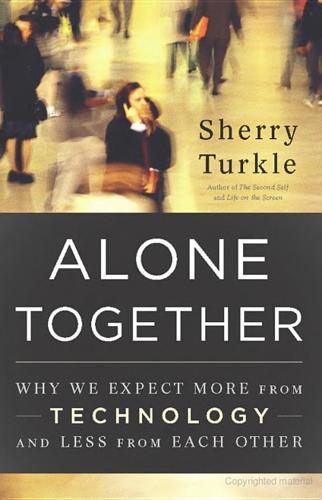
Alone Together
by
Sherry Turkle
Published 11 Jan 2011
It would be another decade before Levy was bested in chess by a computer program, Deep Thought, an early version of the program that beat Gary Kasparov, the reigning chess champion in the 1990s.3 These days, Levy is the chief executive officer at a company that develops “smart” toys for children. In 2009, Levy and his team won—and this for the second time—the prestigious Loebner Prize, widely regarded as the world championship for conversational software. In this contest, Levy’s “chat bot” program was best at convincing people that they were talking to another person and not to a machine. Always impressed with Levy’s inventiveness, I found myself underwhelmed by the message of this latest book, Love and Sex with Robots.4 No tongue-in-cheek science fiction fantasy, it was reviewed without irony in the New York Times by a reporter who had just spent two weeks at the Massachusetts Institute of Technology (MIT) and wrote glowingly about its robotics culture as creating “new forms of life.”5 Love and Sex is earnest in its predictions about where people and robots will find themselves by mid-century: “Love with robots will be as normal as love with other humans, while the number of sexual acts and lovemaking positions commonly practiced between humans will be extended, as robots will teach more than is in all of the world’s published sex manuals combined.” 6 Levy argues that robots will teach us to be better friends and lovers because we will be able to practice on them.
…
Binney, “Virtual Experiences, Physical Behaviors: The Effect of Presence on Imitation of an Eating Avatar,” PRESENCE: Teleoperators and Virtual Environments 18, no. 4: 294-303, and J. A. Fox and J. N. Bailenson, “Virtual Self-modeling: The Effects of Vicarious Reinforcement and Identification on Exercise Behaviors,” Media Psychology 12 (2009): 1-25. 7 Turkle, Life on the Screen. 8 The Loebner Prize Competition also awards a prize to the person who is most obviously a person, the person who is least confused with an artificial intelligence. See Charles Platt, “What’s It Mean to Be Human, Anyway?” Wired, May 1995, www.wired.com/wired/archive/3.04/turing_pr.html (accessed May 31, 2010). 9 Mihaly Csíkszentmihalyi, Beyond Boredom and Anxiety (San Francisco: Jossey-Bass, 2000 [1st ed. 1975]), and Natasha Schüll, Addiction by Design: Machine Gambling in Las Vegas (Princeton, NJ: Princeton University Press, forthcoming). 10 Mihaly Csíkszentmihalyi, Flow: The Psychology of Optimal Experience (New York: Harper & and Row, 1990). 11 With too much volume, of course, e-mail becomes too stressful to be relaxing.
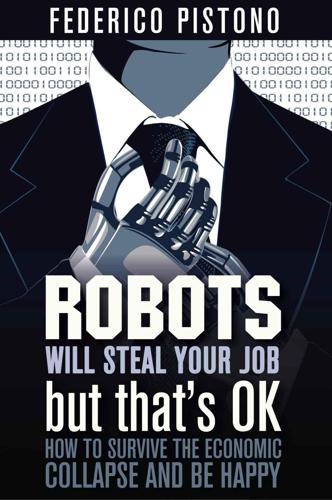
Robots Will Steal Your Job, But That's OK: How to Survive the Economic Collapse and Be Happy
by
Pistono, Federico
Published 14 Oct 2012
Nobody believed it represented an act of intelligence of any sort, since it worked in a very mechanistic way. Boy, we have gone so far since then. The classical “Turing test approach” has been largely abandoned as a realistic research goal, and is now just an intellectual curiosity (the annual Loebner prize for realistic chattiest81), but helped spawn the two dominant themes of modern cognition and artificial intelligence: calculating probabilities and producing complex behaviour from the interaction of many small, simple processes. As of today (2012), we believe these represent more closely what the human brain does, and they have been used in a variety of real-world applications: Google’s autonomous cars, search results, recommendation systems, automated language translation, personal assistants, cybernetic computational search engines, and IBM’s newest super brain Watson.
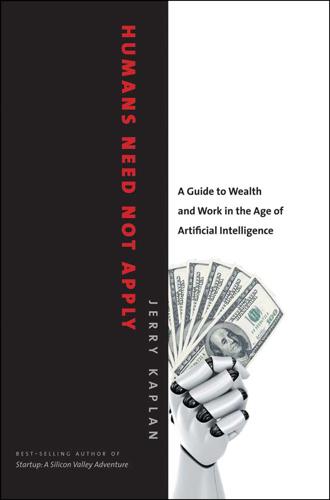
Humans Need Not Apply: A Guide to Wealth and Work in the Age of Artificial Intelligence
by
Jerry Kaplan
Published 3 Aug 2015
They could bring your coffee in the morning and have your favorite drink ready for your trip home, while you relax in one of perhaps four “captain’s chairs” in the van, complete with tray table and entertainment system, similar to a first-class airplane seat. 13. Alan Turing, “Computing Machinery and Intelligence,” Mind 59, no. 236 (1950): 433–60, http://mind.oxfordjournals.org/content/LIX/236/433. 14. http://en.wikipedia.org/wiki/Loebner_Prize#Winners, last modified December 29, 2014. 15. Turing, “Computing Machinery and Intelligence,” 442. 16. Paul Miller, “iOS 5 includes Siri ‘Intelligent Assistant’ Voice-Control, Dictation—for iPhone 4S Only,” The Verge, October 4, 2011, http://www.theverge.com/2011/10/04/ios-5-assistant-voice-control-ai-features/. 17.
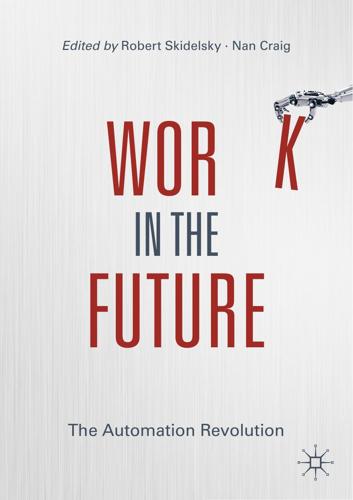
Work in the Future The Automation Revolution-Palgrave MacMillan (2019)
by
Robert Skidelsky Nan Craig
Published 15 Mar 2020
Broadly speaking, we found that humans still hold the competitive advantage in three broad domains: creativity, complex social interactions, and the perception and manipulation of irregular objects. To take one example, the state-of-the-art of technology in reproducing human social interactions is best described by the Loebner Prize—a Turing test competition—where chatbots try to convince human judges that they are actually chatting with a person. Some pundits have argued that there was a breakthrough in 2014, when one chatbot actually managed to convince 30 percent of judges of it being a human. But it did so by pretending to be a 13-year-old boy speaking English as his second language.

Our Final Invention: Artificial Intelligence and the End of the Human Era
by
James Barrat
Published 30 Sep 2013
Second, if the AI’s cognitive architecture is derived from human brains, or from a human brain upload, it may not be as alien as purely new AI. But, there’s a vigorous debate among computer scientists whether that connection to mankind will solve problems or create them. No computer has yet passed the Turing test, though each year the controversial Loebner Prize, sponsored by philanthropist Hugh Loebner, is offered to the maker of one that does. But while the $100,000 grand prize goes unclaimed, an annual contest awards $7,000 to the creator of the “most humanlike computer.” For the last few years they’ve been chatbots—robots created to simulate conversation, with little success.

Possible Minds: Twenty-Five Ways of Looking at AI
by
John Brockman
Published 19 Feb 2019
Weizenbaum’s ELIZA was the pioneer example of such superficial illusion making, and it was his dismay at the ease with which his laughably simple and shallow program could persuade people they were having a serious heart-to-heart conversation that first sent him on his mission. He was right to be worried. If there is one thing we have learned from the restricted Turing Test competitions for the Loebner Prize, it is that even very intelligent people who aren’t tuned in to the possibilities and shortcuts of computer programming are readily taken in by simple tricks. The attitudes of people in AI toward these methods of dissembling at the “user interface” have ranged from contempt to celebration, with a general appreciation that the tricks are not deep but can be potent.

The Singularity Is Near: When Humans Transcend Biology
by
Ray Kurzweil
Published 14 Jul 2005
As I have pointed out, there is no simple means to pass a Turing test, other than to convincingly emulate the flexibility, subtlety, and suppleness of human intelligence. Having captured that capability in our technology, it will then be subject to engineering's ability to concentrate, focus, and amplify it. Variations of the Turing test have been proposed. The annual Loebner Prize contest awards a bronze prize to the chatterbot (conversational bot) best able to convince human judges that it's human.217 The criteria for winning the silver prize is based on Turing's original test, and it obviously has yet to be awarded. The gold prize is based on visual and auditory communication.
…
Hans Moravec, "When Will Computer Hardware Match the Human Brain?" Journal of Evolution and Technology 1 (1998). 215. Ray Kurzweil, The Age of Spiritual Machines (New York: Viking, 1999), p. 156. 216. See chapter 2, notes 22 and 23, on the International Technology Roadmap for Semiconductors. 217. "The First Turing Test," http://www.loebner.net/Prizef/loebner-prize.html. 218. Douglas R. Hofstadter, "A Coffeehouse Conversation on the Turing Test," May 1981, included in Ray Kurzweil, The Age of Intelligent Machines (Cambridge, Mass.: MIT Press, 1990), pp. 80–102, http://www.KurzweilAI.net/meme/frame.html?main=/articles/art0318.html. 219. Ray Kurzweil, "Why I Think I Will Win," and Mitch Kapor, "Why I Think I Will Win," rules: http://www.KurzweilAI.net/meme/frame.html?
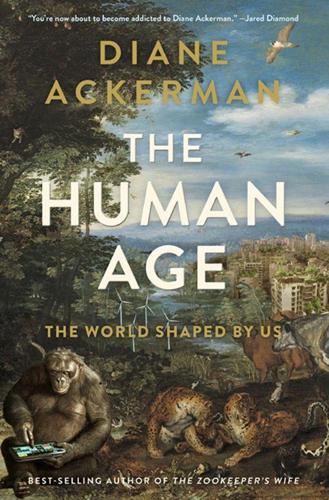
The Human Age: The World Shaped by Us
by
Diane Ackerman
Published 9 Sep 2014
The “twaikus” appear too fast to contemplate, which rather defeats the original purpose of haikus. But at 140 characters they’re a great way to let off steam, and they’re immensely popular. When Robots Weep, Who Will Comfort Them? 214“when, by the glimmer of the half-extinguished light”: Mary Shelley, Frankenstein, chapter 5. 230On September 14, 2013, the annual Loebner Prize for robots that can pass for human went to a chatbot named Mitsuku. However, it ultimately gave itself away in December with this exchange. Q: “Why am I tired after a long sleep?” A: “The reason is due to my mental model of you as a client.” 231“Can we live inside a house”: Technological inventions, such as refrigerators and refrigerated train cars, made frozen food possible, including nutritious out-of-season foods, such as frozen fruits and vegetables.
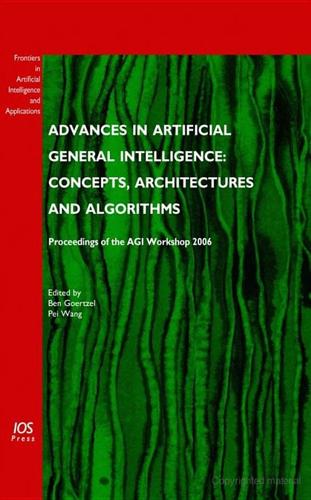
Advances in Artificial General Intelligence: Concepts, Architectures and Algorithms: Proceedings of the Agi Workshop 2006
by
Ben Goertzel
and
Pei Wang
Published 1 Jan 2007
We don’t have repeatable experiments because no one in the field can repeat the experiments of anyone else in the field really. We don’t have post docs, we don’t have degree programs, we don’t have a curriculum, we don’t even have an AI prize, that’s the equivalent of the Nobel prize or something. [Ben Goertzel]: There’s the Loebner prize. [Phil Goetz]: But nobody’s won it. Do we even really have a community in the way that many others sciences do? So I guess I would like to pose the question to whoever among you would choose to answer it: Have we reached the status of being a science and if not, what can we do to be more scientific?
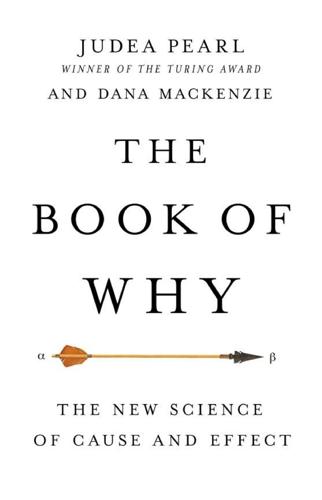
The Book of Why: The New Science of Cause and Effect
by
Judea Pearl
and
Dana Mackenzie
Published 1 Mar 2018
“I believe that in about fifty years’ time it will be possible to program computers,” he wrote, “to make them play the imitation game so well that an average interrogator will not have more than a 70 percent chance of making the right identification after five minutes of questioning.” Turing’s prediction was slightly off. Every year the Loebner Prize competition identifies the most humanlike “chatbot” in the world, with a gold medal and $100,000 offered to any program that succeeds in fooling all four judges into thinking it is human. As of 2015, in twenty-five years of competition, not a single program has fooled all the judges or even half of them.
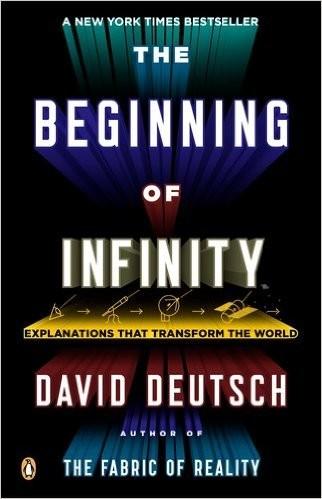
The Beginning of Infinity: Explanations That Transform the World
by
David Deutsch
Published 30 Jun 2011
Should the rules nevertheless allow the human to do this, in order to mitigate the previous problem? Unfortunately, such subtleties are not relevant at the current state of the art. This is well illustrated by the following excerpts from the conversation with which the program Elbot won the (lesser) Loebner prize in 2008: JUDGE: do you understand the point of a turing test? ELBOT: There are some people who would not pass the Turing test themselves. Why must they inflict it on computers? JUDGE: I spose it is a little harsh ELBOT: If we robots ever had marriages they would be eternal: ‘Till rust do us part’.

The Technology Trap: Capital, Labor, and Power in the Age of Automation
by
Carl Benedikt Frey
Published 17 Jun 2019
Because its potential applications are so vast, Michael and I began by looking at tasks that computers still perform poorly and where technological leaps have been limited in recent years. For a glimpse of the state of the art in machine social intelligence, for example, consider the Turing test, which captures the ability of an AI algorithm to communicate in a way that is indistinguishable from an actual human. The Loebner Prize is an annual Turing test competition that awards prizes to chat bots that are considered to be the most humanlike. These competitions are straightforward. A human judge holds computer-based textual interactions with both an algorithm and a human at the same time. Based on these conversations, the judge must then try to distinguish between the two.

Architects of Intelligence
by
Martin Ford
Published 16 Nov 2018
Turing’s test was also not supposed to have a time limit, but that characteristic has been frequently forgotten, in particular in various recent AI competitions. MARTIN FORD: That seems silly. People aren’t intelligent for only half an hour. It has to be for an indefinite time period to demonstrate true intelligence. I think there’s something called the Loebner Prize where Turing tests are run under certain limited conditions each year. BARBARA GROSZ: Right, and it proves what you say. It also makes clear what we learned very early on in the natural-language processing arena, which is that if you have only a fixed task with a fixed set of issues (and in this case, a fixed amount of time), then cheap hacks will always win over real intelligent processing, because you’ll just design your AI system to the test!

Artificial Intelligence: A Modern Approach
by
Stuart Russell
and
Peter Norvig
Published 14 Jul 2019
As far back as Homer (circa 700 BCE), the Greek legends envisioned automata such as the bronze giant Talos and considered the issue of biotechne, or life through craft (Mayor, 2018). The Turing test (Turing, 1950) has been debated (Shieber, 2004), anthologized (Epstein et al., 2008), and criticized (Shieber, 1994; Ford and Hayes, 1995). Bringsjord (2008) gives advice for a Turing test judge, and Christian (2011) for a human contestant. The annual Loebner Prize competition is the longest-running Turing test-like contest; Steve Worswick’s MITSUKU won four in a row from 2016 to 2019. The Chinese room has been debated endlessly (Searle, 1980; Chalmers, 1992; Preston and Bishop, 2002). Hernández-Orallo (2016) gives an overview of approaches to measuring AI progress, and Chollet (2019) proposes a measure of intelligence based on skill-acquisition efficiency.
…
., 852, 1085 local-sensing vacuum world, 148 local beam search, 133 local consistency, 170 localist representation, 77 locality, 257 locality-sensitive hash (LSH), 707 localization, 151, 494, 939 Markov, 984 locally structured system, 435 locally weighted regression, 709 local search, 128–137, 160, 190, 253–254, 265, 266 location sensor, 935 Locke, J., 24 Lockhart, E., 224, 1112 Loebner Prize, 1057 Loftus, E., 271, 1104 log-normal distribution discrete, 650 Logemann, G., 251, 266, 1092 logic, 21, 232–235 atoms, 278 default, 352, 356, 359 equality in, 282 first-order, 269, 269–297 inference, 298–300 semantics, 274 syntax, 274 first-order (FOL), 269 fuzzy, 232, 273, 477 higher-order, 273 inductive, 428 interpretations in, 275–277 model preference, 352 models, 274–275 nonmonotonic, 243, 351, 351–353, 359 notation, 21 propositional, 226, 235–240, 264, 269 inference, 238–254 semantics, 236–238 syntax, 235–236 quantifier, 278–282 resolution, 243–247 sampling, 475 temporal, 273 terms, 277–278 logical agent, 404 logical connective, 35, 235, 264, 278 logical inference, 233, 298–331 logically exhaustive, 404 logical minimization, 337 logical omniscience, 346 logical piano, 266 logical positivism, 25 logical reasoning, 240–255 logicism, 21 logic programming, 248, 296, 312–316 constraint, 316, 330 probabilistic, 665 tabled, 315 Logic Theorist (LT), 36, 266 LOGISTELLO (Othello program), 206 logistic function, 442, 735 logistic regression, 703, 735, 881 logit model, inverse, 442 log likelihood, 776 Lohia, P., 1047, 1060, 1087 Lohn, J.